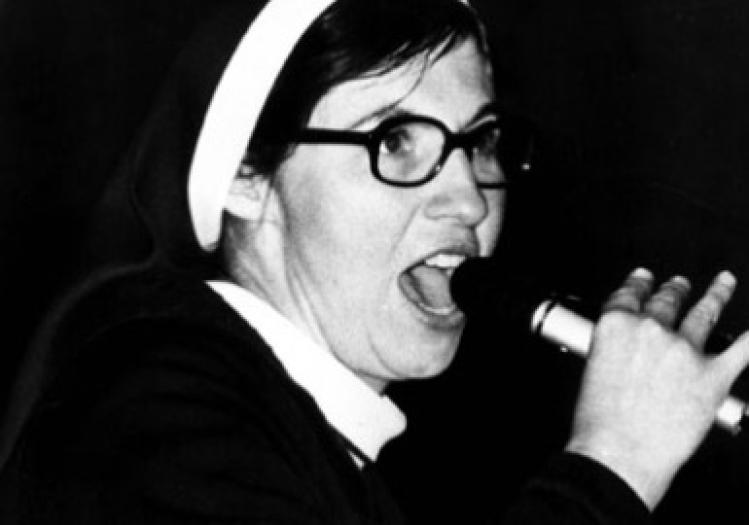
If you were near a radio in the mid-seventies you probably heard a lot of Janet Mead, even if you didn’t necessarily know who Janet Mead was. Her “rock” recording “The Lord’s Prayer” was, as they say in the business, burning up the charts in the late winter and early spring of 1974, peaking at No. 4 on Billboard’s Hot 100--during Holy Week, as it happened.
Peaking, but never really going away, and not just because the song embodied what the word “earworm” must have been coined to describe. It became a Sunday-morning staple on New York’s WOR, to which the knob on my parents’ car radio was permanently fixed. The song seemed stuck in heavy rotation—programmed to play repeatedly during the hours we’d likely be on our way to and from Mass—in the years between my communion and confirmation, a period that spanned three presidencies, three papacies, and, closer to home, the loyal service of three different Plymouth station wagons.
What I didn’t know then was that Janet Mead was Sister Janet Mead, of the Sisters of Mercy order in Australia, where she taught music at a pair of Catholic schools. Originally recorded as a B-side, “The Lord’s Prayer” ultimately went gold—selling more than two million copies in the U.S. (more than three million internationally).
 Still reliably an answer in trivia contests on one-hit-wonders of the seventies, Mead retains the distinction of being “only” (only?) the second woman to chart a top 10 single while serving as a nun (some of you might be able to guess the other). Among the artists she shared chart space with in 1974 were Barbra Streisand, the Jackson 5, Todd Rundgren, Barry White, and Eric Clapton. She was even up for a Grammy in the Best Inspirational Song category, losing to none other than Elvis Presley and his recording of “How Great Thou Art.”
Still reliably an answer in trivia contests on one-hit-wonders of the seventies, Mead retains the distinction of being “only” (only?) the second woman to chart a top 10 single while serving as a nun (some of you might be able to guess the other). Among the artists she shared chart space with in 1974 were Barbra Streisand, the Jackson 5, Todd Rundgren, Barry White, and Eric Clapton. She was even up for a Grammy in the Best Inspirational Song category, losing to none other than Elvis Presley and his recording of “How Great Thou Art.”
While the production company used its share of the massive earnings from “The Lord’s Prayer” to rebuild its studio (“featuring a Neve Customised Model 8038 24-track mixing console having 28 microphone inputs and simultaneous quadraphonic, stereophonic and monophonic mix-down,” read the publicity statement), Mead donated hers to charity. The song’s popularity also won Mead a degree of fame she apparently hadn’t anticipated. She has been quoted as saying that the record’s success made for a “horrible time” in her life, even causing her to question her faith. She seemed to allude to this in notes accompanying her 1975 album “A Rock Mass”: “It is easy to see the effect of a pop-tune which is a success and heard all over the world, because it has very obvious results. Not so easy is it, to see the more lasting effects of the kind of person we allow ourselves to become.”
Mead didn’t stop teaching, writing, or performing music, though she did eventually leave the Sisters of Mercy. Her original producer maintains a website from which her recordings are available. And “The Lord’s Prayer” still has a way of turning up, as in this clip of Stephen Colbert and Jack White recalling the hits of yore (slight language advisory). But Colbert and White are wrong in more ways than one by associating it with the sixties. “The Lord’s Prayer” is pure seventies, unmistakably and, for better or worse, unforgettably.
